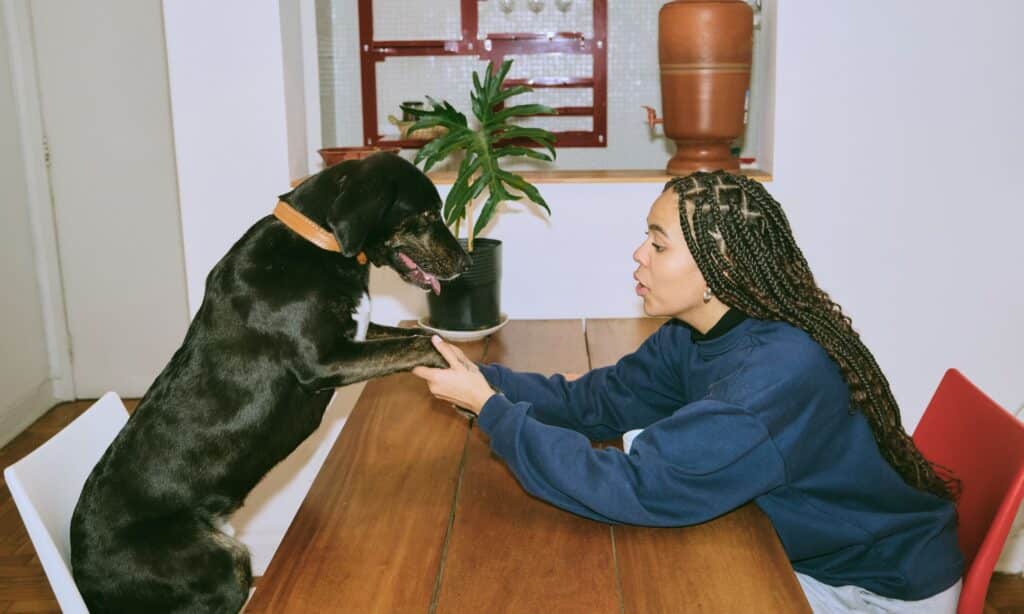
In case your canine wants insulin, she or he most certainly has Kind 1 diabetes. Managing a diabetic canine comes with a steep studying curve that features monitoring their blood sugar and giving them life-saving insulin. In nearly all circumstances, as soon as your canine wants insulin, he requires it each day for all times. This will really feel overwhelming for a lot of canine dad and mom.
With the best data, a bit of follow and a superb veterinarian, you’ll be able to handle your canine’s diabetes like a professional! Your veterinarian might suggest adjustments to eating regimen, train and atmosphere, however insulin is vital for diabetic canines. Feeling assured with insulin — together with how and when to present it — in addition to what sort of insulin you might use, is the primary place to begin.
Why does your canine want insulin and the way does it work?
Insulin is a hormone produced by your canine’s pancreas. This hormone helps regulate the glucose within the bloodstream. With out insulin, the sugar in your canine’s blood builds as much as a dangerously excessive degree. This may end up in life-threatening electrolyte imbalances and one very sick canine.
Canine which can be diabetic often undergo from Kind 1 diabetes. Which means that the cells of their pancreas that make insulin have stopped working. Kind 1 diabetes may be attributable to many components, together with:
- continual pancreatitis
- some autoimmune issues
- weight problems
- Cushing illness
Sadly, Kind 1 diabetes in canines can’t be healed and methods to deal with it requires every day insulin for all times.
How do I get began with insulin for my canine?
Probably the most labor-intensive time in your canine’s journey with diabetes is to start with. Your canine could also be recovering from a current disaster of excessive blood sugar, and figuring out your canine’s perfect insulin sort and dose requires a interval of trial and error.
Listed below are the steps to comply with to get your canine’s blood sugar correctly regulated.
- Be taught to present insulin to your canine. Your veterinarian will ship you residence with a bottle of insulin and particular insulin syringes to present the insulin. Insulin needles are very small and the insulin is injected proper beneath the canine’s pores and skin. Use the world between your canine’s shoulder blades to present these injections. Decide up the pores and skin to create a tent. Place the needle into your canine by pushing by the tented space of pores and skin. Push the syringe’s plunger to inject the insulin. This may really feel scary at first. With a bit of follow, and when you notice the needles are fairly small and are hardly ever uncomfortable on your pup, administering injections feels a lot simpler.
- Verify your canine’s blood glucose. Chances are you’ll be requested to deliver your canine in for blood glucose checks, or you might be despatched residence with a blood glucose monitor. The flexibility to examine your canine’s blood glucose ranges at residence with a monitor just like the Alphatrak will prevent cash and visits to the veterinary hospital.
To start with, your veterinarian might must carry out a blood glucose curve that requires blood glucose values each two hours. This offers your veterinarian details about your canine’s blood glucose all through the day and in relation to insulin administration. This may be executed in a clinic or at residence. Some great benefits of performing these curves at residence embrace a extra snug day on your canine and a extra correct studying, as stress attributable to a veterinary go to can change blood glucose ranges.
- Be taught when to present insulin to your canine. Most insulin varieties have to be given each 12 hours and are sometimes timed with breakfast and dinner. Insulin ought to solely be given in case your canine has eaten their meal first. In case your canine wakes up and decides to not eat, that dose of insulin ought to be skipped. You may as well use your at-home blood glucose monitor to determine if it’s applicable to present your canine’s subsequent dose of insulin. If the glucose values are already regular or low, contemplate skipping this dose. When doubtful, give your veterinarian a name for additional instruction.
- Maintain a canine well being journal. That is helpful for all events concerned in caring on your canine. Listed below are the essential knowledge factors to maintain monitor of in the course of the preliminary administration of your canine’s diabetes.
- Weight. Checking this weekly or each different week may be useful. This may be executed at your veterinarian’s workplace or utilizing a house scale or child scale in case your canine is sufficiently small.
- Urge for food. Recording your canine’s urge for food may be useful data on your veterinarian. This solely must be executed within the preliminary phases of managing your canine’s blood sugar.
- Thirst/Urination. Elevated blood sugar causes your canine to drink and urinate greater than typical. When your pup returns to regular consuming and urinating habits, their blood sugar is most certainly turning into extra regulated.
- Blood glucose. If you’re monitoring your canine’s blood glucose at residence, write it down with the time and date.
- Insulin and meals administration. Document when and the way a lot insulin you might be giving your canine. Protecting monitor of your canine’s consuming habits, together with snacks, can be essential.
Forms of insulin and syringes

A number of sorts of insulin can be utilized on your canine, and your veterinarian might begin with one sort and transfer to a different. These range in price and in period of motion. In addition they have totally different syringe varieties that they’re appropriate with.
Insulin syringes are both U-100 or U-40. The U-100 syringes are appropriate with insulin that has 100 items per milliliter of insulin. The U-40 syringes are appropriate with insulin that has 40 items per milliliter of insulin. Mixing up the syringes might trigger your canine to get too little or an excessive amount of insulin.
Under are widespread insulins utilized in canines and their related syringe varieties:
- Vetsulin. That is appropriate with U-40 needles and must be given as soon as to twice every day relying on the canine. Nonetheless, this model of insulin often is available in a dosing pen that’s straightforward to make use of. Make sure you maintain the pen beneath the pores and skin throughout administration for five to 7 seconds to make sure all of the insulin is allotted.
- ProZinc (PZI). That is additionally appropriate with U-40 needles and requires twice every day dosing.
- Lantus (glargine). This long-acting insulin is appropriate with U-100 needles and is given twice every day.
- Humulin N (NPH). This insulin is a typical selection and is appropriate with U-100 needles.
Finally the kind of insulin you compromise with will rely in your veterinarian’s choice, what is offered, price and the way your canine responds.
Harmful unwanted effects of insulin in canines
Probably the most harmful impact of insulin is low blood sugar. When your canine is given insulin, their cells are extra in a position to make the most of the physique’s glucose. If ranges of sugar within the blood change into too low, your canine will get sick and will die if not handled. In case your canine skips a meal, don’t give her or him their insulin dose.
All the time correctly combine insulin earlier than administration. Signs of low blood sugar embrace:
- seizures
- lethargy
- trembling
- fainting
- vomiting
If you happen to suspect your canine has low blood sugar, give corn syrup (ask your vet about how a lot to present) and search emergency veterinary care.
Managing Kind 1 diabetes might really feel intimidating at first. You and your pup will quickly be in a rhythm with a brand new confidence in your every day routine. Encompass your self with a help staff that features a veterinarian you want and belief, pet sitters or a neighbor who might help give your canine’s insulin in case you are gone and an internet group of different canine dad and mom which can be additionally caring for a diabetic canine. You might be your canine’s finest medical advocate, and your furry good friend is so fortunate to have your love and help.



